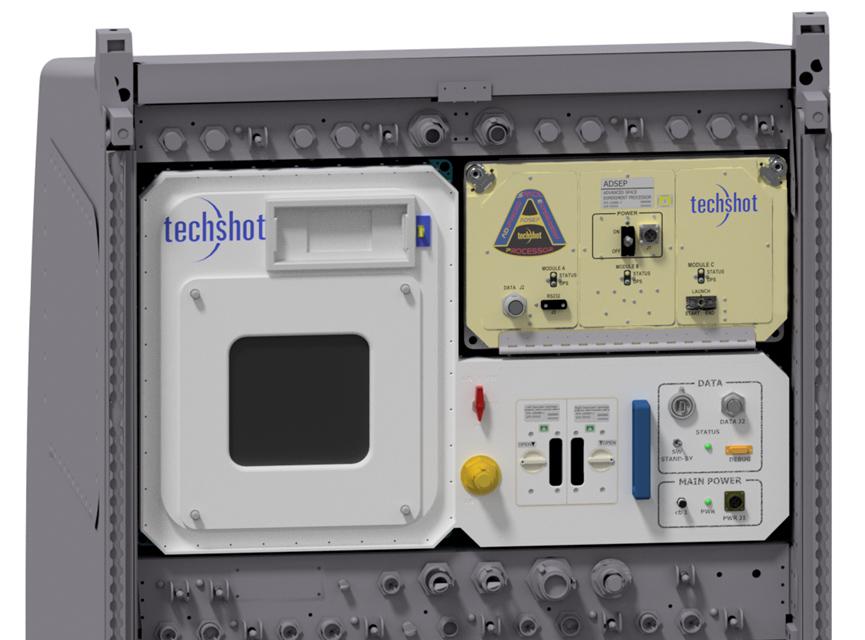The next phase of a NASA sponsored mission to 3D print human organs and tissues in space will launch in February 2019. A 3D BioFabrication Facility (BFF) developed by nScrypt and Techshot and destined for the International Space Station (ISS) will form part of the cargo of SpaceX CRS-17.
3D printing in zero gravity
nScrypt is based in Orlando, Florida and is a manufacturer of industrial micro-dispensing and 3D printing systems. The company is spin out of Sciperio Inc who, under a DARPA contact, developed an award winning bioprinter in 2003.
Based in Greenville, Indiana, Techshot has nearly three decades worth of experience in the development of spaceflight equipment. The first project of Techshot co-founder, President and CEO John C. Vellinger to earn it’s place on a NASA mission was a KFC-sponsored payload. The experiment was intended to study the how microgravity in space affects the growth of chicken embryos. Tragically, the “Chix in Space” project was loaded onto the ill-fated Challenger.
Since then Techshot has grown into a company employing approximately 50 people. Payloads and spaceflight equipment made by Techshot have flown on sub-orbital rockets, space shuttles and the SpaceX Cargo Dragon. As we reported in June 2016, Techshot and nScrypt completed a successful zero G flight over the Gulf of Mexico. Flying in a Zero Gravity Corporation aircraft, the test demonstrated that a heart structure could be 3D printed in zero gravity.
3D printing a heart patch in space
CEO John C. Vellinger said, “We are very excited to see this project, and all that it can provide, come to life. With the goal of producing everything from organs, to pharmaceuticals, to perhaps even food, the BFF has the ability to improve the lives of people on earth and help enable deep space exploration.”
Joining the BFF on the 2019 voyage is the nScrypt 3D Bio Assembly Tool (BAT) and Techshot’s ADvanced Space Experiment Processor (ADSEP).

The nScrypt BAT 3D printer uses a patented SmartPump that gives 100 picoliter volumetric control and can operate with nozzles as small as 10 microns. Using a bioink the nScrypt BAT permits the cell printing necessary to develop the thick tissue and organs that NASA hope will someday be part of lifesaving equipment.
nScrypt CEO, Ken Church, said, “Especially when dealing with something as important as tissue, it is vital to place the correct amount of material in the correct position every time. This is what our machines offer and what has contributed to our success in bioprinting as well as other applications.”
“This is an exciting time for discovery and more importantly a time of impact for those that are seriously seeking solutions to grow thick vascularized tissue, which is the basis for a fully printed organ.”
Once installed on the ISS the BFF will be used to 3D print a cardiac patch for damaged hearts. nScrypt explains, “To realize the cardiac patch, cells will be printed into the bioreactor cassette. The bioreactor will then provide media perfusion to deliver nutrients and remove toxins from the tissue and keep it alive, while also providing electrical and mechanical stimulus to encourage the cells to become beating heart tissue.”
For all the latest 3D printing news, subscribe to the 3D Printing Industry newsletter. Also, follow us on Twitter, and like us on Facebook.
Make your next additive manufacturing career move or hire new talent. Search and post 3D Printing Jobs on our free jobs service.
Featured image shows SpaceX Falcon 9 rocket and Dragon capsule vertical at launchpad. Photo via NASA.



